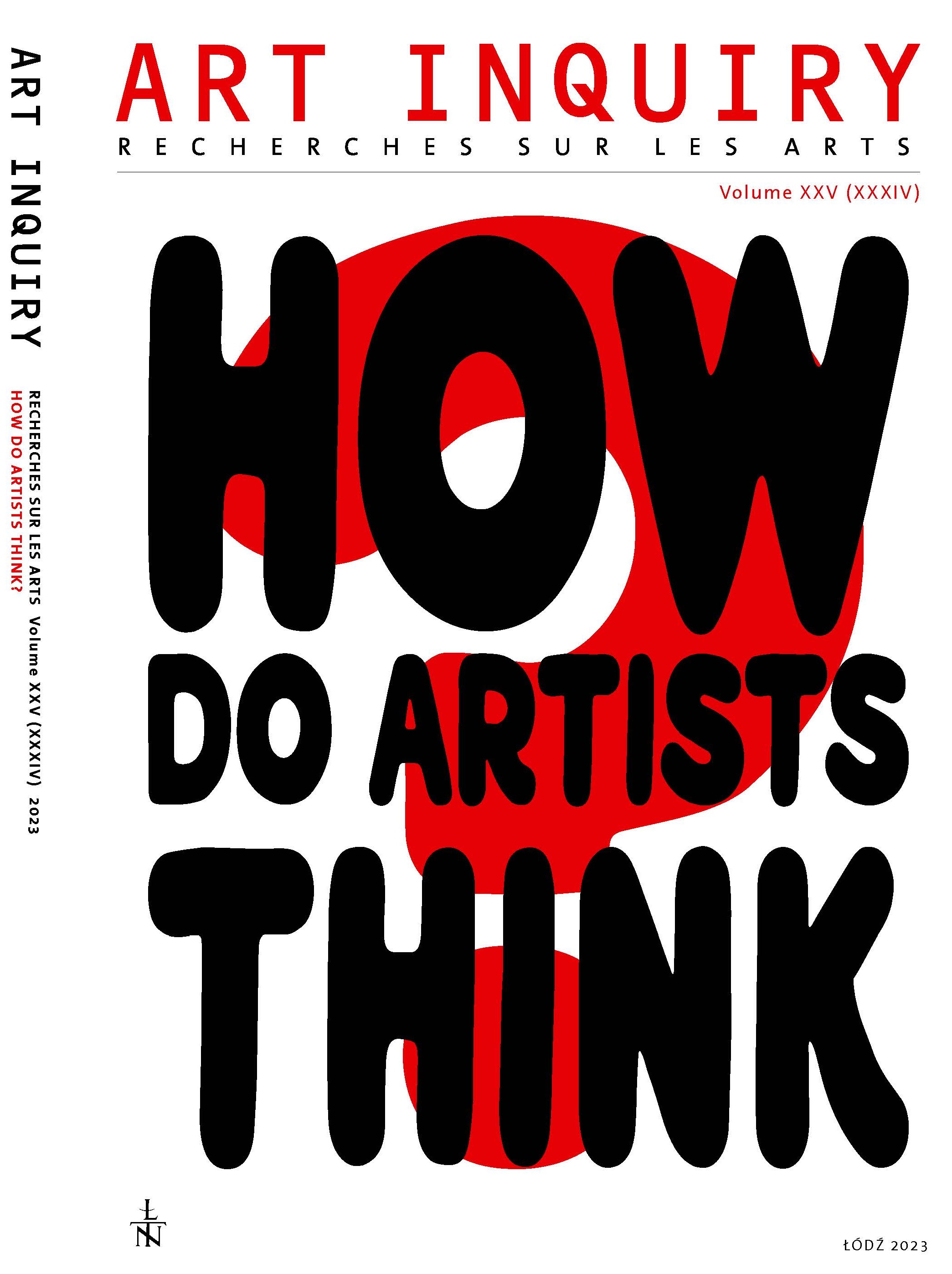Krajobraz (w sztuce i poprzez sztukę) ucieleśniony
DOI:
https://doi.org/10.26485/AI/2023/25/10Słowa kluczowe:
krajobraz, zmysły, haptyczność, sztuka, Józef ChełmońskiAbstrakt
W eseju odejmuję próbę sformułowania koncepcji krajobrazu ucieleśnionego, czyli krajobrazu, który przekracza tradycyjne ujęcia: jako widoku, jako krajobrazu kulturowego, a także jako krajobrazu partycypacyjnego. Zmierzam ku takiemu rozumieniu, w którym krajobraz staje się światem doznań wielozmysłowych, kształtujących nasze relacje ze światem zewnętrznym, zanurzeniu się w nim tak, że dajemy upust wszystkim aktywnym zmysłom, które osadzają nas w doznaniach współtworzących tu i teraz. Dla uzasadnienia swoich też sięgam po dwa przykłady malarstwa Józefa Chełmońskiego: Bociany i Babie lato, dostrzegając w nich potencjał interpretacyjny, pozwalający dostrzec w nich coś więcej niż scenę rodzajową. W nich rozpoznaję moment ucieleśnienia krajobrazu, czyli wzajemnego przenikania i oddziaływania wszystkiego, co w danym momencie stanowi o krajobrazie przeżywanym, a nie obserwowanym.
Bibliografia
Angutek D., Kulturowe wymiary krajobrazu. Antropologiczne studium recepcji przyrody na prowincji: od teorii do empirii, Bogucki Wydawnictwo Naukowe, Poznań 2013.
Benjamin W. "A Small History of Photography" in One Way Street and Other Writings, Verso, London, 1985.
Berleant A., Art and Engagement, Temple University Press, Philadelphia 1993.
Berleant A., Re-thinking Aesthetics. Rogue Essays on Aesthetics and the Art, Routledge, 2005.
Frydryczak B., Salwa M., Landscape Art – A New Definition and New Look, in: “Art Inquiry. Recherches sur les arts”, XXIII, 2021, pp. 113-123.
Heidegger M., The Origin of the Work of Art in: Off the Beaten Track, edited and translated by J. Young and K. Haynes, Cambridge University Press, Cambridge, 2002.
Ingold T., Being Alife. Essays on Movement, Knowledge and Description, Routledge, London-New York 2011.
Ingold T., Culture on the ground: the world perceived through the feet, "Journal of Material Culture" 93, 2004.
Ingold T., The temporality of the landscape, "World Archeology", vol. 25, 2.
Jankowiak-Konik B., Malarstwo polskie, Demart, Warszawa 2011.
Merleau-Ponty M., Phenomenology of Perception, Routlage, London New York, 2005.
Paterson M., 'How the World Touches Us': Haptic Aesthetics, in The Senses of Touch Haptics, Affects and Technologies, Berg, Oxford New York 2007.
Rodaway P., Sensuous Geographies. Body, Sense and Place, Routledge, London – New York 1994.
Simmel G. Arnold Böcklin's Landscapes, in Essays on Art and Aesthetics, The University of Chicago Press, Chicago and London, 2020.
Sławek T., Cienie i rzeczy. Rozważania o dotyku, in: W przestrzeni dotyku, (eds) J. Kurek, K. Mali¬szewski, Miejski Dom Kultury Batory, Chorzów 2009.
Pobrania
Opublikowane
Numer
Dział
Licencja

Utwór dostępny jest na licencji Creative Commons Uznanie autorstwa – Użycie niekomercyjne – Bez utworów zależnych 4.0 Międzynarodowe.



